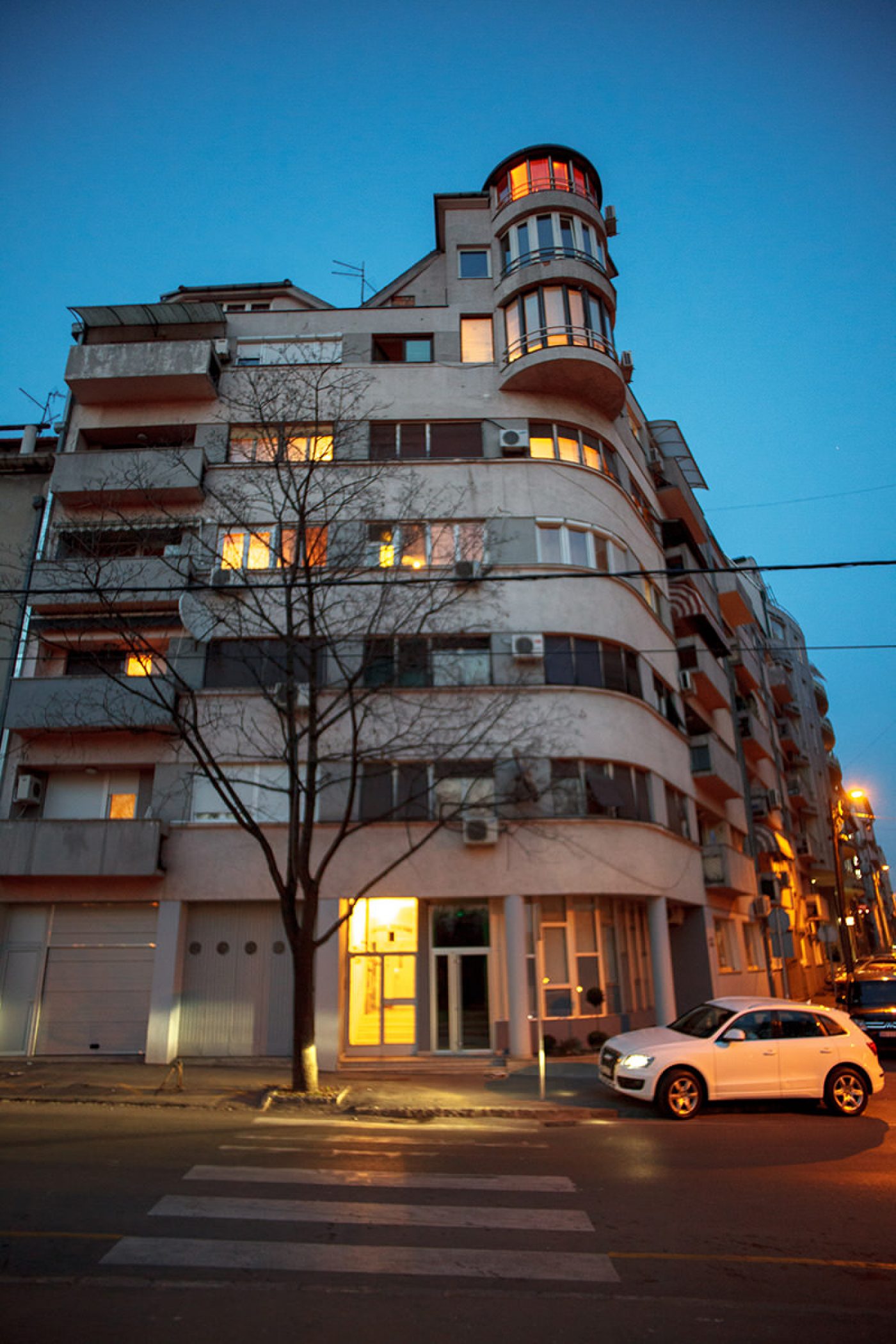
Belgrade became famous in architectural circles in the 1990s for its ‘wildness’; its seemingly spontaneous and unruled spatial practices that at first glance appeared to be a product of a complete ignorance of existing laws. A longer gaze uncovers that the legal-illegal dichotomy in Belgrade was not so simple, and that, behind an exuberant form, the processes that made Belgrade seem wild, have much more to do with the re-regulation of laws, than with their disappearance.
“The right to housing is a basic legal institution, providing one of the most important means of life to the working classes.” (Conclusion of the First Yugoslav Forum on Housing and Construction, 1956)
The statement above gives a clear idea of the general housing policy that prevailed in socialist Yugoslavia. After splitting with Stalin and with his notions of state socialism and planned economies in 1948, Yugoslavia started developing its own socialist model, acting as a critique of Soviet bureaucratic socialism. The new socialist model, based on workers’ self-management, was anti-state and pro-market, based on an idea that society – not the state – should be owners of the means of production. Many new political institutions were formed that mediated between different political levels and would accelerate Lenin’s conception of the withering away of the state. Yugoslavia’s self-management was a social formation, which combined elements of both communism and capitalism.1
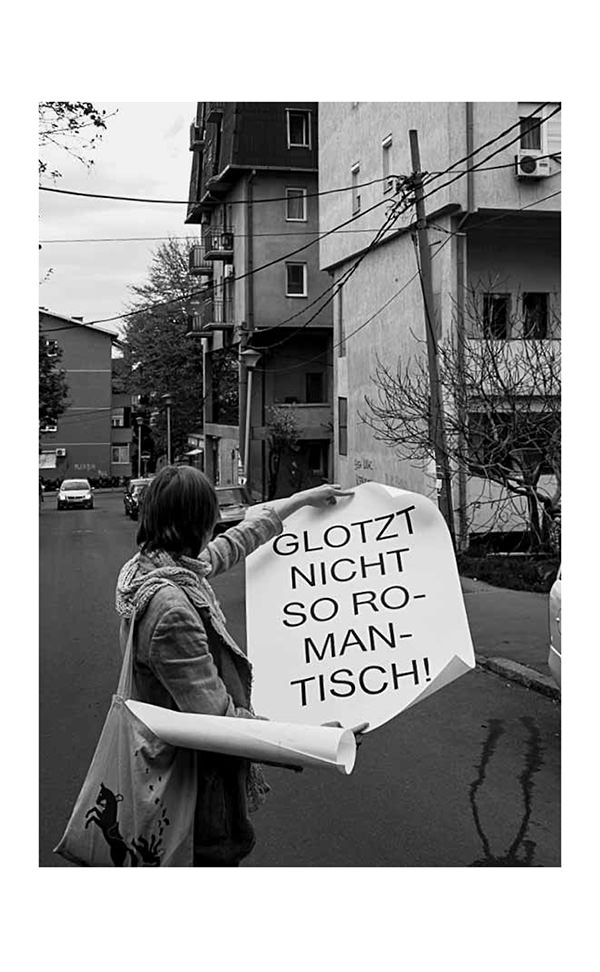
Yugoslavian socialism claimed to politicize the whole of society and came up with new political forms of participation, epitomized in the self-management principle. At the core of this principle was an individual who was free to express, connect, and harmonize his interests with the general interests and goals of the community. State property was replaced with ‘social property’, meaning the property of the entire society where no one was a single owner. Within this context, the apartment was treated as a basic right of the worker and was not considered a commodity; space was treated as infrastructure, and the laws prescribed its fair and rational use.
Among the many human rights established with the new self-managed socialism, the right to housing was one of the more important. It was prescribed in the Regulation on the Management of Residential Buildings, published in the Official Bulletin of the Federative People’s Republic of Yugoslavia Nr.52/1953, as “a principle providing the permanent right to use an apartment, following the regulations of the order in residential buildings.” The right to housing effectively meant that society as a whole was responsible for providing housing for all citizens. The concept of the right to housing had such a strong impact on architects and urbanists, that the editors of the first issue of the architectural magazine Čovjek i prostor (Man and Space) published by the Zagreb Society of Architects had this phrase prominently:
Law on the Financing of Housing Construction,
Official Gazette of the Socialist Republic of Serbia 4/1986
Article 1
Based on solidarity and reciprocity, organizations of Associated Labor, and other self-managed organizations and communities, as well as society at large, must take action and create opportunities for every man to realize one’s need for housing, as well as the fundamental requirements for social security.
Although envisioned as a fair system, with resources for housing construction coming from the surplus value created by various labor organizations, it was not flawless. But it in the end it worked for a great number of people, especially workers, who for the first time in Yugoslavian history were entitled to decent, humane living conditions. However, the production of housing units could not keep up with the surging demand, especially in the 1960s, when the country was among the fastest growing in the world. Those waiting for housing had to find alternative solutions to find shelter outside of the system. This included those who did not even have a chance to get on the waiting lists, as they were either unemployed, or were temporary or permanent migrant workers, usually working abroad. These people often turned to illegal self-building on arable land on the outskirts of the major cities, as the state was not flexible enough to create instruments to include these people in the system of redistributed housing. The connection between unemployment, guest migrant workers, and wild construction is therefore strong and important to fully understand the process of ‘wild’ building prior to 1990.
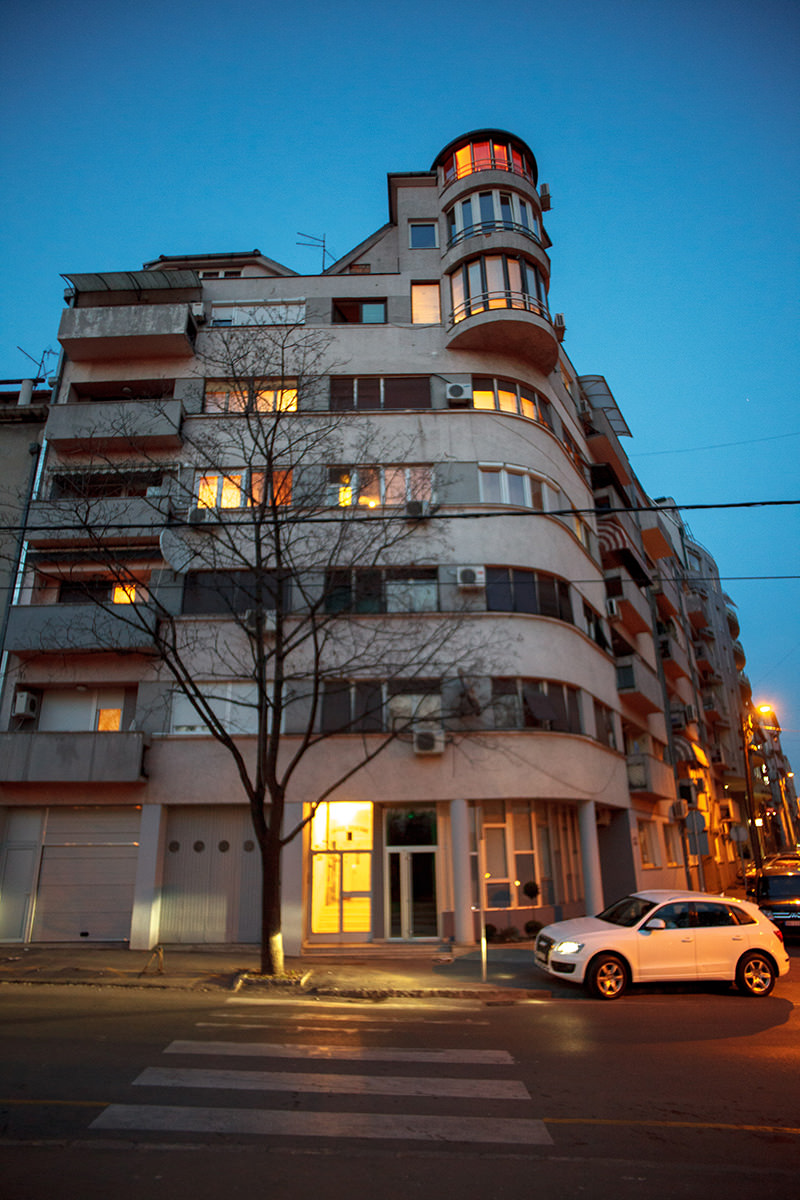
In time, illegal settlements on the outskirts of Belgrade became an unlikely mixture of self-built homes as primary residences but also secondary homes that were often also self-built, but were used for weekend leisure purposes. The practice of illegal construction was met with strong criticism, especially from urban planners, and partial demolitions were carried out from time to time; yet still the number of illegal units built before 1990 saw a slow but steady annual increase. Officials would never admit it, but the wild construction had its benefits. It alleviated the pressure from the already overstressed system of the socially distributed apartments, as “a tolerated or overlooked supplement to the modern city planning”.2
From social property to private property
After a crippling crisis in 1980 and just before it fell apart in wars, Yugoslavia abandoned socialism, and commenced an aggressive restoration of capitalism. All the links that bound the official production of space to the economic, social, political, and legal framework of self-managed socialism were abandoned.
Law on Housing Relations,
Official Gazette of the Socialist Republic of Serbia 12/1990
Article 2
Working people and citizens will meet their personal and family housing needs with their own resources with regard to the construction, purchase and lease of their apartments.
Before the system had time to reconfigure to a post-socialist condition, the wars broke out. Thus the privatization of the housing stock began precisely when the construction industry and the housing market in-the-making imploded. The attitude towards space changed from societal – though it was not entirely clear what this meant – to a more private form, so from ‘ours’ to just ‘mine’. The changed attitude was reflected almost immediately in the collective housing facades, as various interventions started to appear. Balconies were closed off and transformed into living or storage space and windows were changed in an effort to personalize the uniform modernist housing estates.
Privatization, according to Boris Groys, “should not, however, be understood as simply a transition that leads (back) from a society without private property to a society with private property. Ultimately, privatization proves to be just as much an artificial political construct as nationalization had been. Privatization as a (re)introduction of private property does not, therefore, lead back to nature – to natural law. […] Rather, a political decision was made to switch from building up communism to building up capitalism, and to that end (in complete harmony with classical Marxism) to produce artificially a class of private property owners who would become the principal protagonists of this process. Thus there was no return to the market as a ‘state of nature’ but rather a revelation of the highly artificial character of the market itself.”3
People who had permanent tenant rights to the apartment they were living in were given the opportunity to buy their apartment with an adjusted price. More than ninety percent of people embraced that opportunity. It was the end of the right to housing. Those who needed a space to live were to find it on the market. But there was a problem: the housing market didn’t really exist at the beginning of the 90s; large construction companies – accustomed to building huge housing complexes – had not yet restructured to build for this fundamentally different type of market. And demand for new housing, especially in Belgrade, was high than ever. In the absence of market supply, the alternative of building without a permit became a go-to strategy. At first, new illegal buildings started appearing at the fringes of the city but slowly inched closer to the center. Meanwhile in the center, another permit-free process began, that of roof extensions on top of slabs. The roof extension became the symbol of disregard for rules in the city.
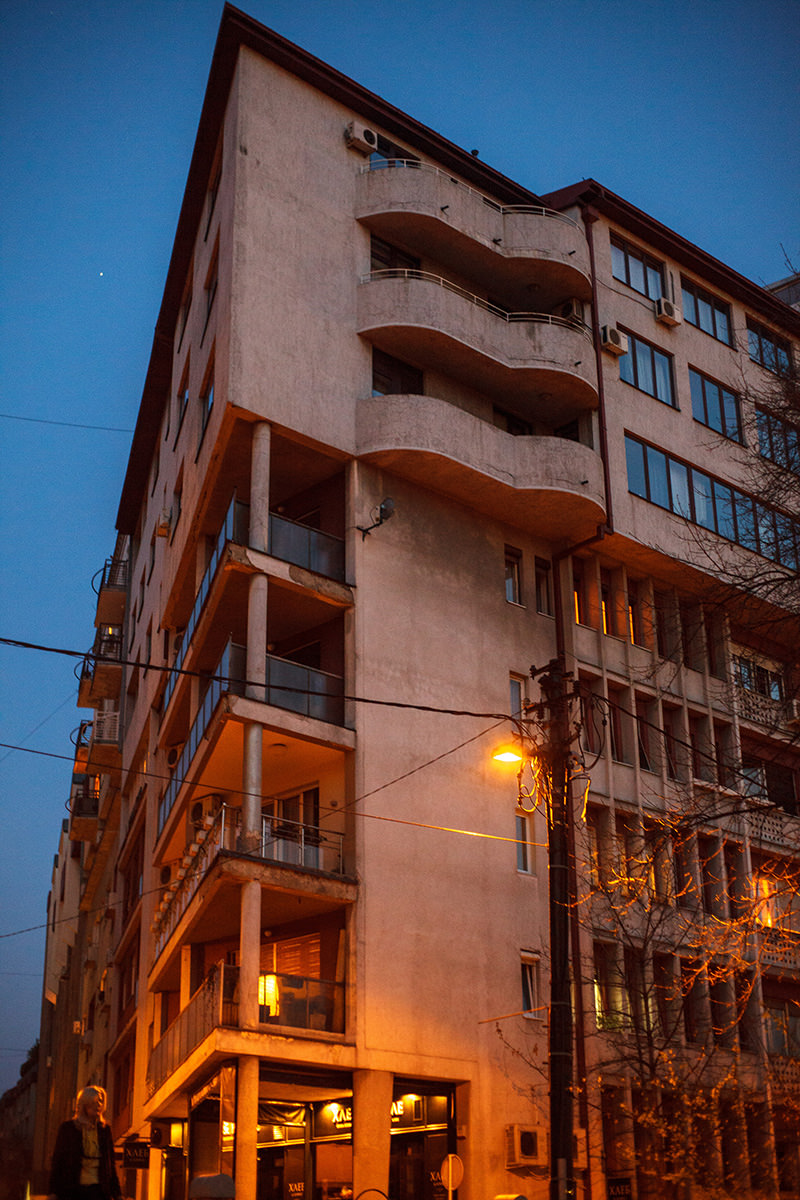
When attitude becomes a norm: legalization and embedding
The state, after its consolidation in 1995, started addressing this overwhelming number of illegal extensions, through law, in order to diminish the precarious position in which so many people lived. Two laws were passed – the Law on Maintenance of Buildings (1995), that regulated the procedure of building roof extensions, and the Law on the Special Conditions of Issuing Construction, or Usage Permit for a Specific Object (1997) – intended to give some order to the increasingly chaotic field of illegal construction.
However, both of these laws achieved exactly the opposite of what was intended. Instead of preventing illegal construction, they in fact created procedures that would allow illegal extensions to become legal. Thus the extralegal was created – a practice of building illegally, knowing that it will be legalized in the future. And, while purely illegal construction diminished, the extralegal grew. So, instead of diminishing the number of roof extensions, the Law on Maintenance of Buildings caused investors to speculate on and build more extensions. Fairly soon, in the center of Belgrade all attics and flat roofs were ‘reserved’; suddenly extensions were no longer modest additions in the form of a single room or additional flat for a large family living below, but additional floors from which profit was to be made by outside investors.
Additionally, the 1997 law that was passed to break the vicious cycle of illegal building once and for all, really pushed this type of construction into overdrive as it introduced the retroactive issuing of permits, meaning it gave permission after-the-fact for buildings built without permits. The law gave jurisdiction to the municipality to implement the process of legalization. One of the necessary steps that authorities had to take before the deadline for registration for legalization had passed was to make a survey of what was actually built on the ground, so they could check whether the buildings in question were in fact built before the deadline had expired. This had a powerful effect: as the deadline approached, construction boomed. Once the deadline passed, work came to a temporary standstill after which the pace of illegal construction would then slowly pick up again. If this response to their law came as a surprise in 1997, subsequent lawmakers had no excuse for repeating the same procedure in 2003 and 2009 – and just recently in 2013, when it was announced yet again that everything would be legalized. By 2003, the planners realized that it is impossible to discuss illegality and lack of necessary laws as the core of the problem, noting in new general plan for Belgrade that: “The semi-legal construction of housing was created as a result of the deliberate institutional support for the construction of housing built without proper documentation. In many cases, constructions were based on a variety of documents that were part of the documentation necessary to acquire construction permits, but were not complete. In fact, it is very likely that most of the buildings marked as illegal actually belong to this category.”4
However, they failed to notice that the law, by never differentiating between what was built for profit or for basic sustenance, had in fact been crucial in accelerating the construction market. Various cunning strategies for extralegal building were practiced on new constructions as well as extensions, but the extensions of the Russian Pavilions5 is the site where this play between the legal, the illegal, and the extralegal was played out to its extreme. And in the aftermath a whole set of stealth strategies were developed that were implemented in later developments. The norm became an invisible, embedded extralegality where each development is partly determined by negotiations with the authority. Dominant factors in the context of this embedded extralegality were situational criteria and the leverage investors had with the authorities, whether that be through political connections, economic pressure, personal ties, or corruption. One thing was certain; the practice of extralegal protocols became limited to an exclusive club of investors with sufficient power. Gone were the days when extralegality was practiced equally by those in it for profit and those in it for sustenance. In fact, it became the norm to embed extralegal construction in every legal project. From inception, new projects would be designed slightly larger than allowed by urban planners, and two sets of drawings would be made: one for the permit and one for the market. The size of the aberration would be determined in the communication with the municipality: the larger the aberration, the higher up in the administrative hierarchy the negotiating party had to be. Space, usually below the roof and parts of the last floor, which in the construction permit drawings were usually notated as common auxiliary spaces, were sold on the market as regular flats. Buyers of other flats in the building would have to sign a contract allowing the buyer of the flat in the extralegal space to transform the auxiliary space into a residential unit. The space in question was usually never completed, so there was no refurbishment needed. Since refurbishment took place only in the paperwork, the developer could avoid paying taxes on the extralegal unit.
Extralegal is the most political
The post-millennial marriage of extralegal and neoliberal urban policies became an empowering model of developer-led urbanism. The developer would act, and then the city would legitimize these actions, using the omnipresent claim that capital needs to flow, and that self-managed socialism needs to be forgotten. And there is no giving up on this strategy today. Projects only scale back to the designated legal code, if the extralegal design fails to get approval. At stake here is public space, since extralegal procedures, as a rule, entail that common space gets sacrificed. This was especially pronounced in the construction of the Ušće shopping mall in Belgrade, where the size of the building was actually twice the size allowed in the permit, almost entirely eliminating the pre-existing parkland on the plot.
Ironically, what ostensibly started as a process of empowering people through their direct intervention in the process of housing production, had the opposite effect once laws were written to manage it. And while we can discuss the undeniable democratic potential of such informal processes, labelling all extralegal processes as democratic, just because they are spatially similar, has a dangerously blurring effect. The case of Belgrade shows how the supposed democratization soon became the empowerment of a few, who started using it as a tool of dispossession. The guise of democratization directly relates to the strength of the value system inherited from Yugoslavia, which had the capacity to sustain a certain level of ‘spatial selfishness’ while still keeping overall control of the process; a process that considers society as a whole, and not just individual interests. As the system dissolved, so did the democratic potential of extralegal actions. The individual action of people to address their basic sustenance was never the issue. Rather, the problem was that the state acted with the intention to regulate the extralegal field, but in essence replaced the actions of common people with the systematic actions of investors. This was done by atomizing the issues of illegal development, trying to resolve the legal status of each constructed unit, and not looking at the larger system in which all those units existed. This made it possible to draft laws in which there is no substantial difference between aberrations of a few square meters and those of a few thousand square meters, and no difference between built-for-profit and built-for-bare-life.
However promising the heterotopic developments in the urban fabric of Belgrade seemed to be, at the end of the 1990s – inspiring the architecture studio, Stealth, to describe Belgrade as a “trembling ground on which the rules for producing urban substance and the logic for preserving urban vitality are constantly reinvented”6 – it is questionable whether they had the potential to reinvent the city, since according to David Harvey, “reinventing the city inevitably depends upon the excersise of a collective power over the processes of urbanization”7, and the multiplicity of individual actions, no matter how self-initiated and bottom-up they were, never became a collective power.
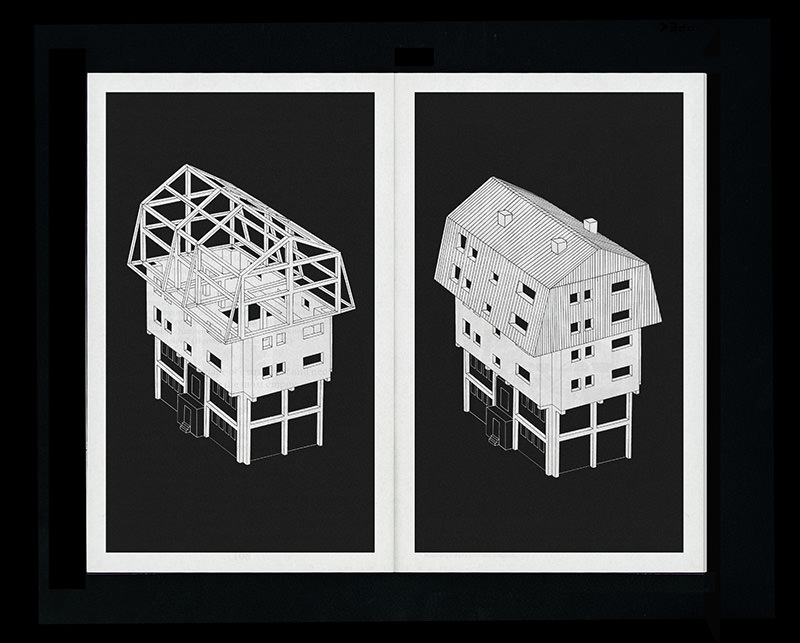
Therefore, it is dangerous to look at the form of individual roof extensions perched on top of modernist buildings and hail them as democratization, as the process in which they were created has not led to the political emancipation of those who built them. Plainly, the multitude of self-builders never became a political subject capable of negotiating the rules in their favor and imposing their vision of development. The strategies they employed on the ground, however, led to the political subjectivization of capitalists and it was their interpretation that finally got embedded in the laws.
Where does this leave architects? In their wish to remain largely apolitical as a profession, architects failed to understand that in order to put themselves forward as relevant actors, it is necessary for the profession to rediscover its politics. In this process of negating the contemporary moment, it was not only the profession that lost the solid ground on which to stand, but in failing to articulate to the urgent problem of the diminishing social realm in our cities, society as a whole also lost. Were architects in fact capable of intervening? Can architects become something more than stylists for real-estate speculation? To borrow from Antonio Gramsci: “The crisis consists precisely in the fact that the old is dying, and the new cannot be born.”8 The rupture created by the extralegal in Belgrade in the 1990s and 2000s briefly opened up a glimpse of where the new can be born. At the table of architectural and urbanist negotiation, where investor and capital have their positions entrenched in the logic of growth and where the city and state are, at best, blackmailed into stimulating growth by deregulating the laws, a new chair has to be added, namely that of an actor powerful enough to break the bond between state and capital and plead for the common good. This could create a context in which a different idea of the city can be produced together with a new politics. It is not strange that extralegality is so closely tied to the questions of housing, as it is exactly in that space that the new can be born – in reclaiming the right to housing, both as a society and as architects.
* ‘Don’t Stare So Romantically!’ was a slogan of German playwright and theater director Bretolt Brecht, originally used in the 1922 play Drums in the Night, which he used to invite viewers to critically engage with what they are seeing, and to think about the content, not the form or potential feelings of the authors.
Notes
1. Elements of communism included: the introduction of different social relations, different types of properties, the abolition of private land ownership, the domination of labor over capital, the internalization of the costs of social reproduction, and infrastructure for social, educational, and healthcare facilities guaranteeing more universal access. Elements of capitalism included: the introduction of market forces, managerial control over workers.
2. Milica Topalović, ‘Brick & Gold: The Urbanism & Architecture of Informal Belgrade’, in: ETH Studio Basel Contemporary City Institute (eds.), Belgrade Formal Informal. (Zurich: Verlag Scheidegger & Spiess, 2012) pp. 80-117.
3. Boris Groys, ‘Privatizations, or Artificial Paradises of Post-Communism’, In: Art Power. (Cambridge: MIT Press, 2008).
4. Master Plan of Belgrade 2021, (2003).
5. The Russian Pavilions is a housing estate in the workers’ neighbourhood Karaburma in Belgrade. Originally built in the aftermath of World War II it was the first housing project built in socialist Belgrade in the period between 1947-1949. Ironically, built before the General Plan of Belgrade was passed in 1951, it was built outside of the plan on land owned by the city, and was from its inception extralegal. Each pavilion had four apartments, and it was built as semi-prefabricated construction. After 1990, holders of tenant rights privatized their apartments and continued to live in a calm neighbourhood tucked away from the city center, yet in its vicinity, until in 2001, the group of four investors started extending pavilions one by one adding up to six floors in some instances. After the whole operation stopped in 2005, 63 out of 90 pavilions were extended permanently changing the atmosphere and living conditions in the neighborhood.
6. Stealth, ‘The Wild City’ in: Hunch No.4, (Rotterdam: Berlage Institute, 2001/2002).
7. David Harvey, Rebel Cities. (London: Verso, 2012).
8. Antonio Gramsci, Prison Notebooks, (New York: Columbia University Press, 1991).
This article appeared in Volume #38: The Shape of Law. Click here to buy this issue.